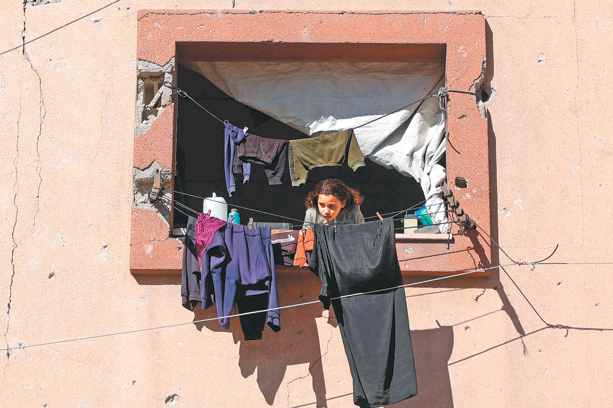Economic prospects for Europe start to look better


The European Commission has revised its economic forecast upward for the coming two years based on its accelerated vaccination program, a recovery fund that is set to take effect and a stronger global performance powered by China and the United States.
The Spring 2021 Economic Forecast released on Wednesday projected that the 27-member European Union's economy will expand by 4.2 percent in 2021 and 4.4 percent in 2022, while the 19-member eurozone economy is forecast to grow by 4.3 percent this year and 4.4 percent next year.
The numbers for this year were both up compared with the February forecast of 3.7 percent for the EU economy and 3.8 percent for the eurozone economy.
The eurozone is a subset of EU countries that use the euro as their national currency.
The commission said that growth rates will continue to vary across the EU, but all member states should see their economies return to precrisis levels by the end of 2022.
In 2020, the EU economy contracted by 6.1 percent and the eurozone economy shrank by 6.6 percent, a setback described by the European Commission as "a shock of historic proportions".
"While we are not yet out of the woods, Europe's economic prospects are looking a lot brighter," said European Commission Executive Vice-President Valdis Dombrovskis.
He said that the rising vaccination rates, easing of restrictions, the returning to normal of people's lives and the EU's recovery program have contributed to the upgraded forecasts. But he cautioned that much hard work is ahead, citing the still existing pandemic risk.
European Commissioner for Economy Paolo Gentiloni said, "The shadow of COVID-19 is beginning to lift from Europe's economy."
He cited a stronger-than-expected rebound in global activity and trade as a major factor for the brighter outlook. China replaced the US to become the EU's largest trade partner for the first time in 2020.
"In China, growth is set to continue at a rapid pace, aided by its early control of the pandemic and buoyant external demand," Gentiloni said.
The rebound in the EU's economy that began last summer stalled in the fourth quarter of 2020 and the first quarter of this year as fresh public health measures were introduced to contain the surge in COVID-19 cases.
The commission said that the rebound in growth will also be driven by private consumption and investment. Public investment, as a proportion of GDP, is set to reach its highest level in more than a decade in 2022, backed by the EU's 750 billion euro ($905 billion) recovery plan.
The commission predicted that the unemployment rate in the EU would be 7.6 percent in 2021 and 7 percent in 2022, while in the eurozone, the rate would remain at 8.4 percent in 2021 and 7.8 percent in 2022. The rates are all higher than pre-crisis levels.
Hosuk Lee-Makiyama, an economist and director of the Brussels-based European Centre for International Political Economy, said that the spring forecast is very much in line with the International Monetary Fund outlook of April.
"It is evident that the eurozone is not yet out of the woods," he said.
He added that the fact the eurozone took a plunge in GDP twice as deep as that of China or the US, while facing the prospect of a much weaker recovery in 2021 and 2022, is a testament to the EU's handling of the pandemic.
"European companies will continue to look to China and other markets for growth," he said.
Ding Chun, director of the Centre for European Studies at Shanghai-based Fudan University, said that the EU's economic growth in the coming two years will largely depend on its pandemic control and the implementation of related EU economic measures.
"A high public debt and a big gap in recovery among member states will negatively impact relevant policies and their implementation, including those of the European Central Bank," Ding said.
The spring forecast also projected that the bloc's largest economy, Germany, will grow at 3.4 percent in 2021 and 4.1 percent in 2022, while the French economy is expected to grow 5.7 percent in 2021 and 4.2 percent in 2022.
In addition, Italy, which was among the worst hit, is expected to see its economy grow by 4.2 percent this year and 4.4 percent next year.

































